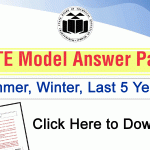Jamia Millia Islamia, commonly known as Jamia, conducts entrance exams for admission to various courses, including Class 11. For students aspiring to join Jamia’s Class 11, the entrance exam is a crucial step. This article provides an overview of the exam pattern, subjects covered, and strategies for preparation.
English
Question 1: Comprehension Passage
Read the following passage and answer the questions below:
Passage: “Once upon a time, in a small village, there was a wise old man. He was known for his knowledge and the ability to solve any problem…”
Questions:
- What was the old man known for?
- Where did the old man live?
- What was the primary trait of the old man?
Answers:
- The old man was known for his knowledge and the ability to solve any problem.
- The old man lived in a small village.
- The primary trait of the old man was his wisdom.
Question 2: Grammar
Correct the following sentences:
- She don’t like ice cream.
- They was playing in the garden.
Answers:
- She doesn’t like ice cream.
- They were playing in the garden.
Question 3: Essay Writing
Write an essay on ‘The Importance of Education’ (150 words).
Answer:
Education is the foundation of a progressive society. It empowers individuals with knowledge, skills, and values needed to contribute meaningfully to the world. Education fosters critical thinking, enhances communication abilities, and promotes personal growth. It breaks the cycle of poverty by providing better job opportunities and improving quality of life. Moreover, education is vital for fostering innovation and driving economic development. An educated population is better equipped to address social and environmental challenges, leading to a more sustainable future. In essence, education is the key to unlocking human potential and achieving a more just and equitable society.
Hindi
प्रश्न 1: गद्यांश
निम्नलिखित गद्यांश को पढ़ें और नीचे दिए गए प्रश्नों के उत्तर दें:
गद्यांश: “एक समय की बात है, एक छोटे से गाँव में एक बुद्धिमान बूढ़ा व्यक्ति रहता था। वह अपने ज्ञान और किसी भी समस्या को हल करने की क्षमता के लिए जाना जाता था…”
प्रश्न:
- बूढ़े व्यक्ति को किसके लिए जाना जाता था?
- बूढ़ा व्यक्ति कहाँ रहता था?
- बूढ़े व्यक्ति की मुख्य विशेषता क्या थी?
उत्तर:
- बूढ़े व्यक्ति को उसके ज्ञान और किसी भी समस्या को हल करने की क्षमता के लिए जाना जाता था।
- बूढ़ा व्यक्ति एक छोटे से गाँव में रहता था।
- बूढ़े व्यक्ति की मुख्य विशेषता उसकी बुद्धिमत्ता थी।
प्रश्न 2: व्याकरण
निम्नलिखित वाक्यों को सही करें:
- वह आईस्क्रीम नहीं पसंद करती।
- वे बगीचे में खेल रहे थे।
उत्तर:
- वह आईसक्रीम नहीं पसंद करती।
- वे बगीचे में खेल रहे थे।
प्रश्न 3: निबंध लेखन
‘शिक्षा का महत्व’ पर निबंध लिखें (150 शब्द)।
उत्तर:
शिक्षा एक प्रगतिशील समाज की नींव है। यह व्यक्तियों को ज्ञान, कौशल और मूल्यों से सुसज्जित करती है, जो उन्हें दुनिया में सार्थक योगदान देने में सक्षम बनाते हैं। शिक्षा आलोचनात्मक सोच को बढ़ावा देती है, संचार क्षमताओं को बढ़ाती है, और व्यक्तिगत विकास को प्रोत्साहित करती है। यह बेहतर नौकरी के अवसर प्रदान करके और जीवन की गुणवत्ता में सुधार करके गरीबी के चक्र को तोड़ती है। इसके अलावा, शिक्षा नवाचार को बढ़ावा देने और आर्थिक विकास को चलाने के लिए महत्वपूर्ण है। एक शिक्षित जनसंख्या सामाजिक और पर्यावरणीय चुनौतियों का समाधान करने में बेहतर सक्षम होती है, जिससे एक अधिक स्थायी भविष्य की प्राप्ति होती है। संक्षेप में, शिक्षा मानव क्षमता को उजागर करने और एक अधिक न्यायसंगत और समान समाज प्राप्त करने की कुंजी है।
Science
Question 1: Physics
What is Newton’s Second Law of Motion?
Question 2: Chemistry
Describe the process of electrolysis.
Answer:
Electrolysis is a chemical process in which electrical energy is used to drive a non-spontaneous chemical reaction. During electrolysis, an electric current is passed through an electrolyte (a substance that contains free ions), causing the ions to move towards the electrodes. Positive ions (cations) move towards the negative electrode (cathode) and gain electrons (reduction), while negative ions (anions) move towards the positive electrode (anode) and lose electrons (oxidation). This results in the decomposition of the electrolyte into its constituent elements or compounds.
Question 3: Biology
Explain the structure and function of the cell membrane.
Answer:
The cell membrane, also known as the plasma membrane, is a selectively permeable barrier that surrounds the cell, providing structural support and protection. It is composed of a phospholipid bilayer with embedded proteins, cholesterol, and carbohydrates. The hydrophobic tails of the phospholipids face inward, while the hydrophilic heads face outward, creating a semi-permeable membrane. The cell membrane controls the movement of substances in and out of the cell, maintaining homeostasis. It allows essential nutrients to enter, waste products to exit, and prevents harmful substances from entering the cell. Additionally, the membrane proteins assist in cell signaling, transport, and communication with other cells.
Biology
Question 1: Genetics
What is Mendel’s Law of Segregation?
Answer:
Mendel’s Law of Segregation states that during the formation of gametes (sperm and egg cells), the two alleles for a trait separate, so that each gamete carries only one allele for each gene. This means that offspring inherit one allele for each gene from each parent. This law explains how genetic variation is maintained in a population and how traits are inherited from one generation to the next.
Question 2: Human Physiology
Describe the process of digestion in the human body.
Answer:
Digestion in the human body is the process by which food is broken down into smaller, absorbable components. It begins in the mouth, where mechanical digestion (chewing) and chemical digestion (saliva) start to break down food. The food then travels down the esophagus to the stomach, where gastric juices containing hydrochloric acid and enzymes further break down proteins. The partially digested food moves into the small intestine, where bile from the liver and digestive enzymes from the pancreas continue the breakdown of carbohydrates, proteins, and fats. Nutrients are absorbed through the walls of the small intestine into the bloodstream. The remaining undigested material passes into the large intestine, where water is absorbed, and the remaining waste is eventually excreted through the rectum and anus.
Question 3: Ecology
Explain the concept of an ecosystem.
Answer:
An ecosystem is a community of living organisms (plants, animals, and microbes) interacting with their physical environment (air, water, soil). These interactions form a complex web of relationships involving the flow of energy and the cycling of nutrients. Ecosystems can vary in size from small ponds to large forests and oceans. They are characterized by the flow of energy through food chains and food webs, where producers (plants) convert solar energy into chemical energy through photosynthesis, which is then passed on to consumers (animals) and decomposers (bacteria and fungi). The balance and health of an ecosystem depend on the biodiversity within it and the interdependence of its components.
Overview of Jamia Class 11 Entrance Exam
The Jamia Class 11 entrance exam is designed to assess the knowledge and skills of students in various subjects. The exam pattern typically includes multiple-choice questions (MCQs) and subjective questions, depending on the subject. The duration of the exam, marking scheme, and syllabus vary each year and are specified in the exam notification.
Subjects Covered in Jamia Class 11 Entrance Exam
The Jamia Class 11 entrance exam covers a range of subjects, including:
- English: This section tests students’ comprehension, grammar, and writing skills.
- Hindi/Urdu: Questions in this section test students’ proficiency in Hindi or Urdu language, depending on the medium chosen.
- Science: The science section covers topics from Physics, Chemistry, and Biology.
- Mathematics: This section tests mathematical aptitude and problem-solving skills.
- Social Science: Questions in this section cover History, Geography, Political Science, and Economics.
Exam Pattern and Marking Scheme
The exam pattern for Jamia Class 11 entrance exam typically includes:
- Multiple-Choice Questions (MCQs): These questions have four options, and students need to choose the correct answer.
- Subjective Questions: These require students to write detailed answers, explain concepts, and solve problems.
- Marking Scheme: Each question carries a specified number of marks. Negative marking may apply for incorrect answers in the MCQ section.
Preparation Tips for Jamia Class 11 Entrance Exam
Preparing for the Jamia Class 11 entrance exam requires a structured approach. Here are some tips:
- Understand the Syllabus: Obtain the latest syllabus and exam pattern from the official website or the exam notification.
- Create a Study Plan: Develop a study plan that allocates sufficient time for each subject and includes regular revision.
- Practice Previous Year Papers: Solve previous year papers to understand the exam pattern, types of questions, and time management.
- Refer to NCERT Books: NCERT textbooks are essential for building a strong foundation in the subjects covered.
- Take Mock Tests: Mock tests help in evaluating your preparation level and identifying areas that need improvement.
Importance of Jamia Class 11 Entrance Exam
The Jamia Class 11 entrance exam plays a crucial role in the admission process. It evaluates students’ knowledge and understanding of subjects and helps in selecting candidates who meet the required academic standards.
Syllabus for jamia millia islamia 11th class entrance exam
The syllabus for Jamia Millia Islamia (JMI) Class 11 entrance exam typically covers the following subjects:
- English Language and Literature:
- Reading Comprehension
- Grammar and Usage
- Vocabulary
- Writing Skills (Essay, Letter, Report Writing)
- Hindi Language and Literature:
- अपठित गद्यांश
- गद्यांश
- पद्यांश
- व्याकरण
- Science:
- Physics
- Chemistry
- Biology
- Mathematics:
- Number System
- Algebra
- Geometry
- Mensuration
- Statistics
- General Knowledge:
- Current Affairs
- History (India and World)
- Geography (India and World)
- General Science
- Civics
- Economics
- Logical Reasoning:
- Verbal Reasoning
- Non-Verbal Reasoning
- Analytical Reasoning
- Social Science:
- History
- Geography
- Civics
- Economics
Latest Posts
- Step-by-step guide to download and apply for jee mains admit card 202
- Comprehensive 2025 government holidays and recruitment details for job seekers
- JEE Mains Admit Card 2025: Your Step-by-Step Guide to Downloading the Hall Ticket
- Everything You Need to Know About 2025 Government Holidays Recruitment
- Comprehensive Guide to rrb d group recruitment 2025 – Eligibility, Vacancies, and Application
- Detailed guide to nps trust recruitment 2025 vacancies, eligibility and apply process
- Comprehensive guide to hpcl recruitment 2025 notification, vacancies, and application process
- ignou bed admission 2025 complete recruitment guide with eligibility and process
- Comprehensive Guide to Indian Army Agniveer Recruitment 2025 Notification and Jobs
- Everything You Must Know About CBSE Board Exams 2025 Changes & New Rules





